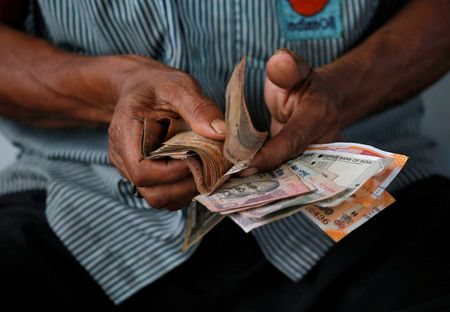MUMBAI (Reuters) – The Indian rupee eked out slim gains against the dollar on Wednesday as investors remained risk averse ahead of domestic inflation data, with the Reserve Bank of India likely stepping in to halt a further slide in the local currency.
The rupee was up 0.1% at 82.23 per dollar, very close to the near-82.32 level it ended in the past three trading sessions.
Traders again pointed to the RBI intervening in small volumes, likely staying in the market since Monday when the rupee had hit a record low of 82.6825.
The central bank is in the market, but it doesn’t have a fixed level in mind for the rupee, said a Mumbai-based trader. “The direction of the rupee is unclear” in this session, the trader said.
Retreating oil prices are a positive for the rupee but a Reuters poll of economists points to the upcoming inflation data for September hitting a five-month high, missing the RBI’s projection, and putting investors in a bind.
Meanwhile, global risk sentiment was dampened as a strengthening dollar, instability in the U.K. bond market, and U.S. inflation print due on Thursday spelled further volatility. [MKTS/GLOB]
“The RBI is intervening to smoothen the volatility and prevent any undue depreciation that may be caused by highly transient daily market events,” said Dhiraj Nim, a foreign exchange strategist and economist at ANZ Research.
“They still have a well-fortified reserves position to do this, but the scale of intervention going forward will have to be clipped,” he added, saying the rupee was likely to remain weak and trudge the 82-83 range in the near-term.
India’s foreign exchange reserves at September-end were at $532.66 billion, a more than two-year low and down by 16% since the beginning of the year.
Meanwhile, Indian equities held up relatively well by rising 0.2%, as against its weak Asian peers.
(Reporting by Anushka Trivedi in Mumbai; Editing by Dhanya Ann Thoppil)











